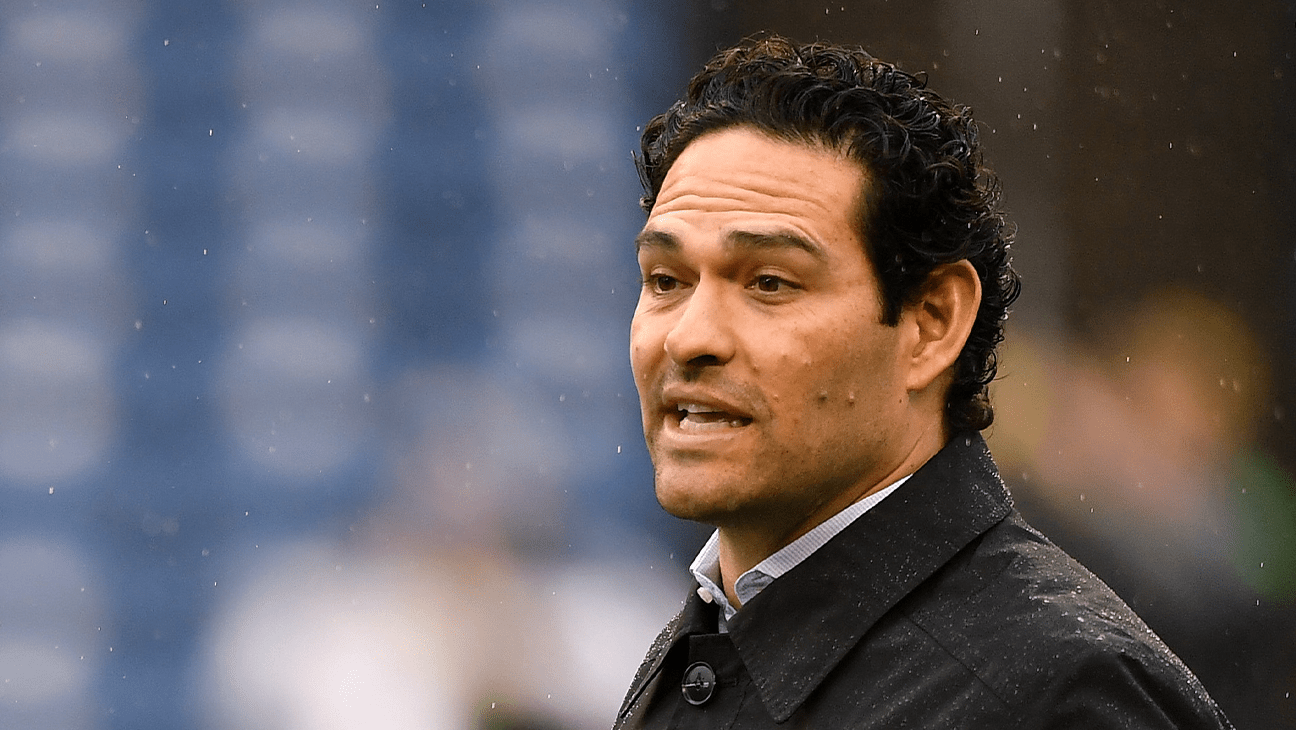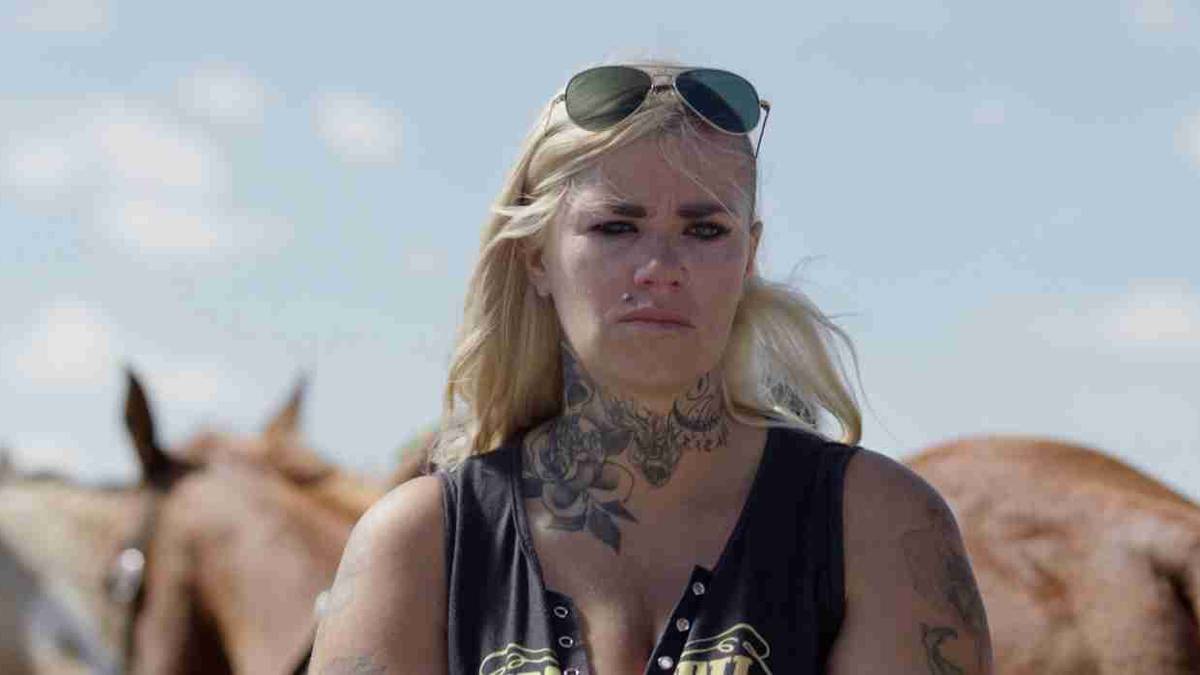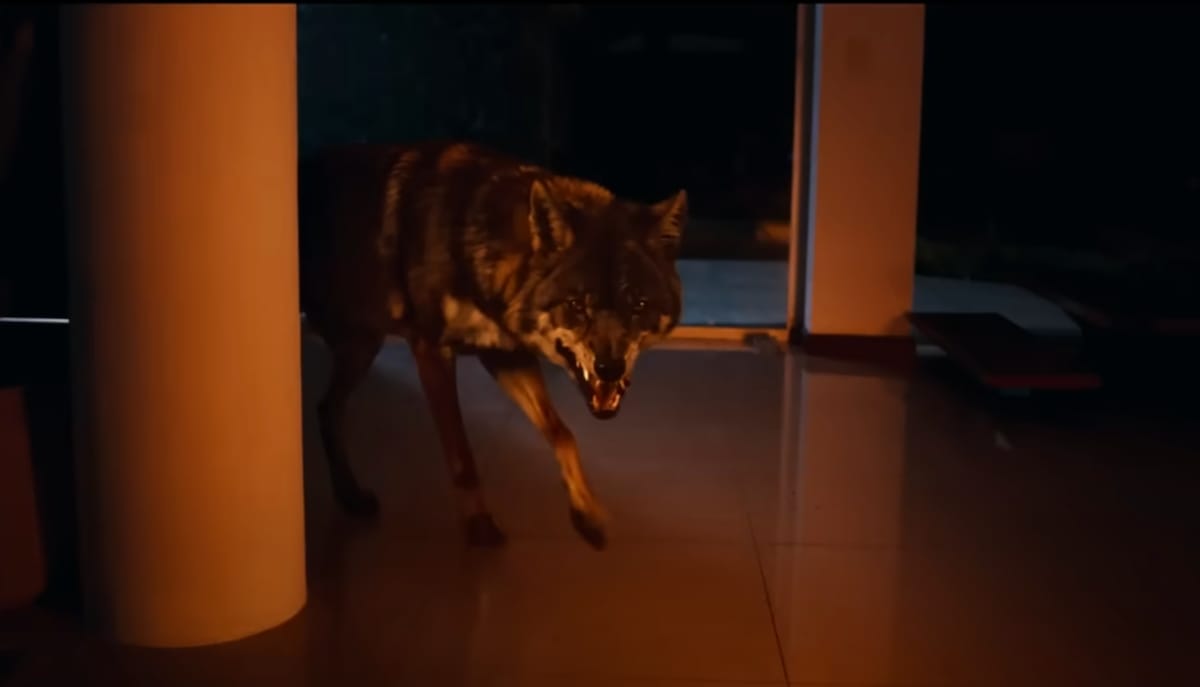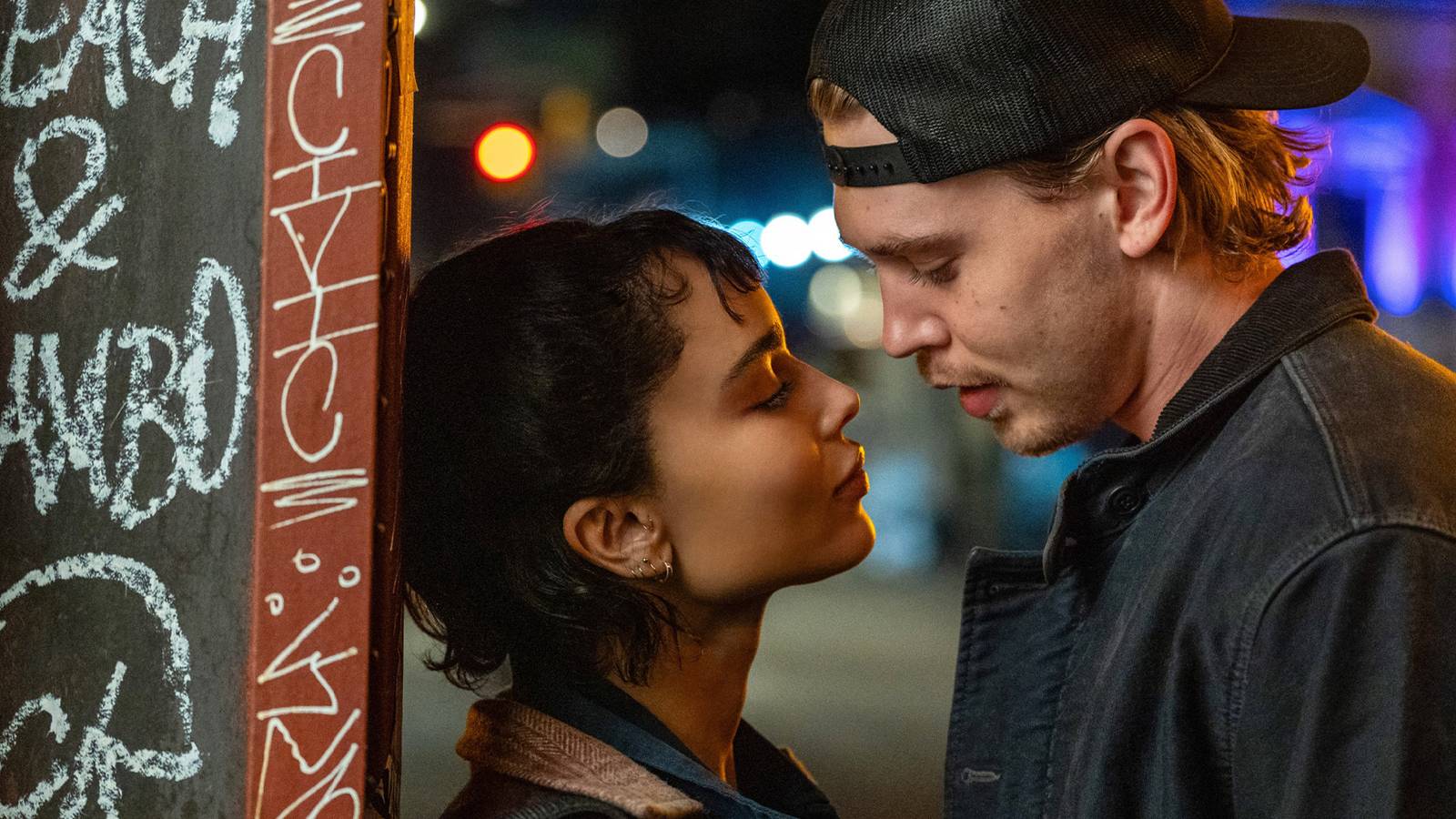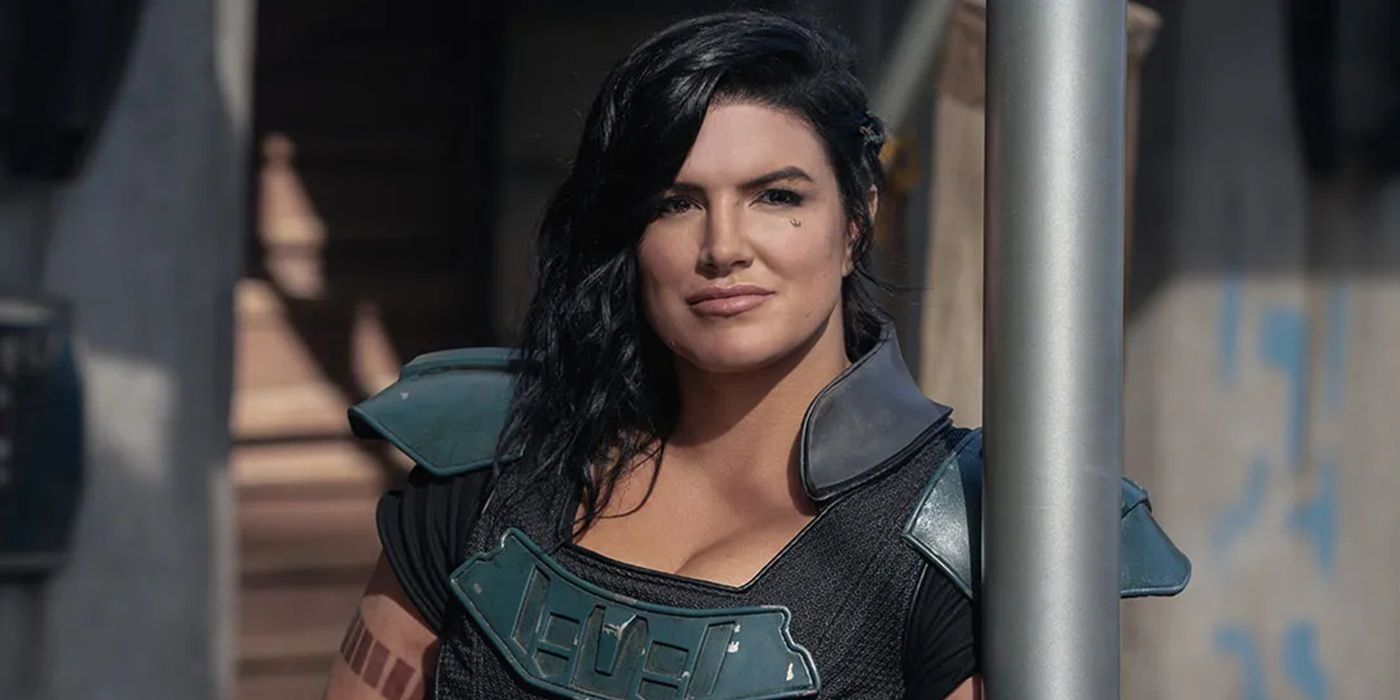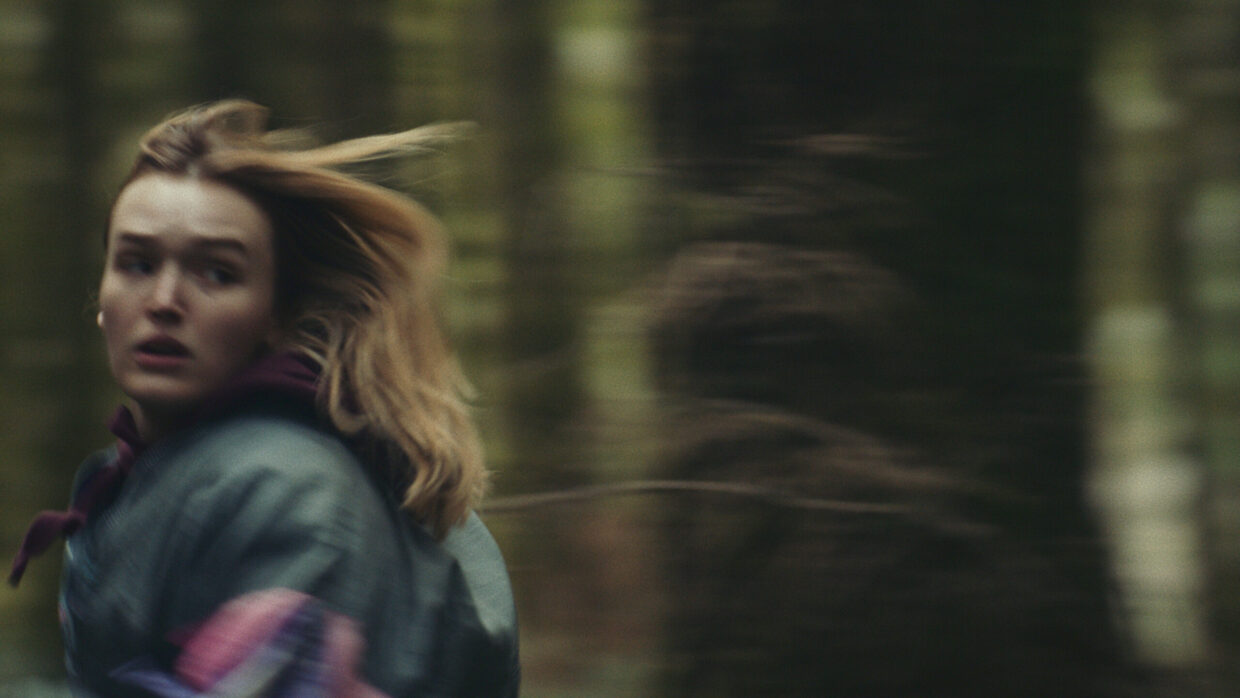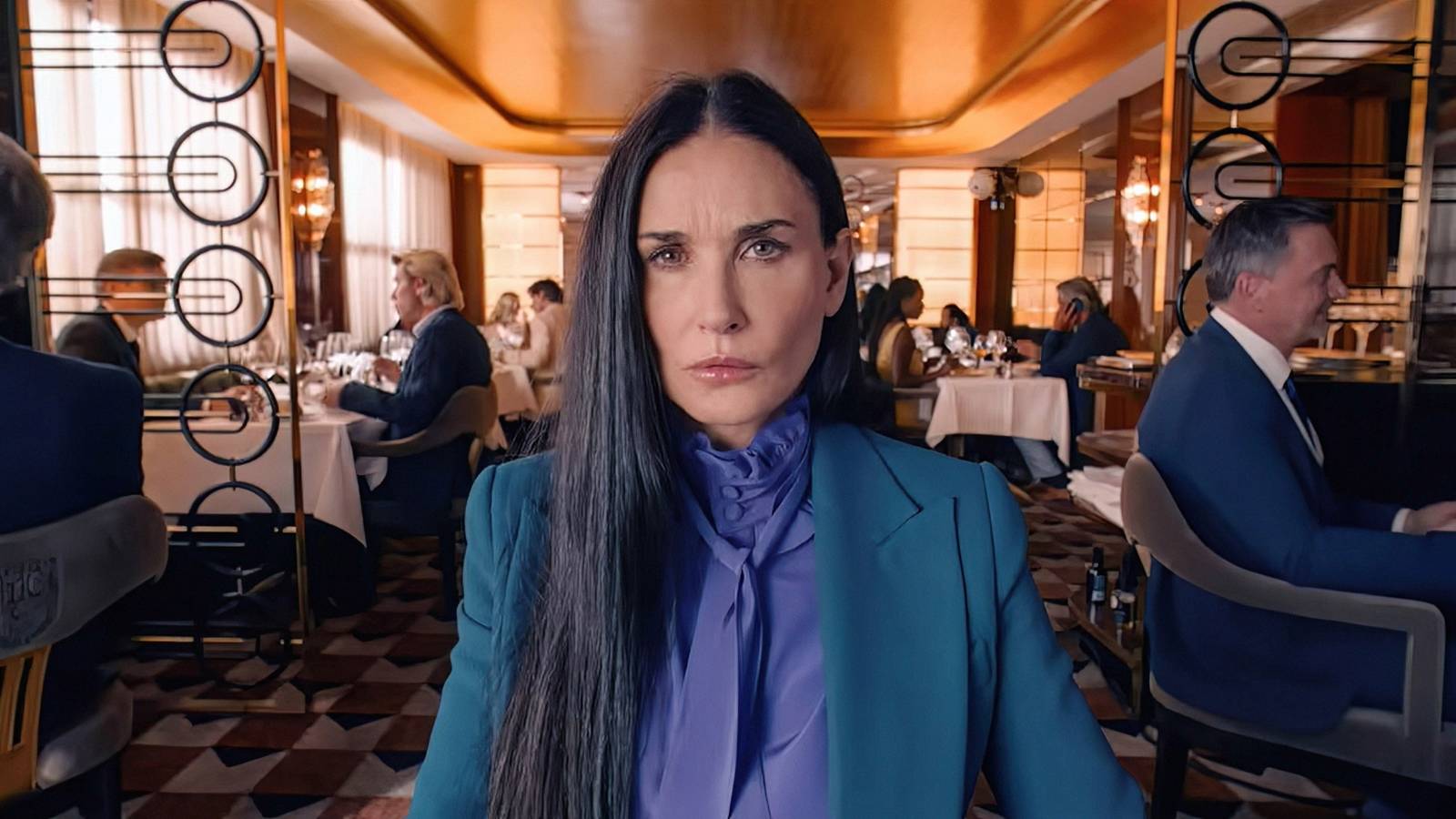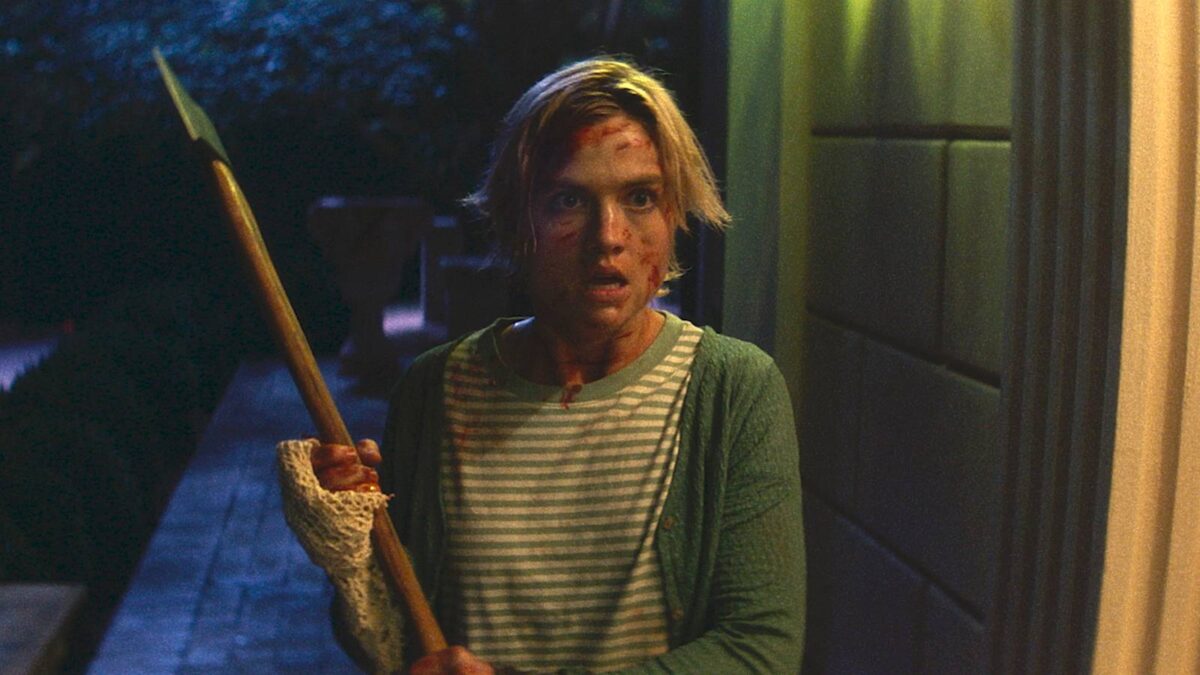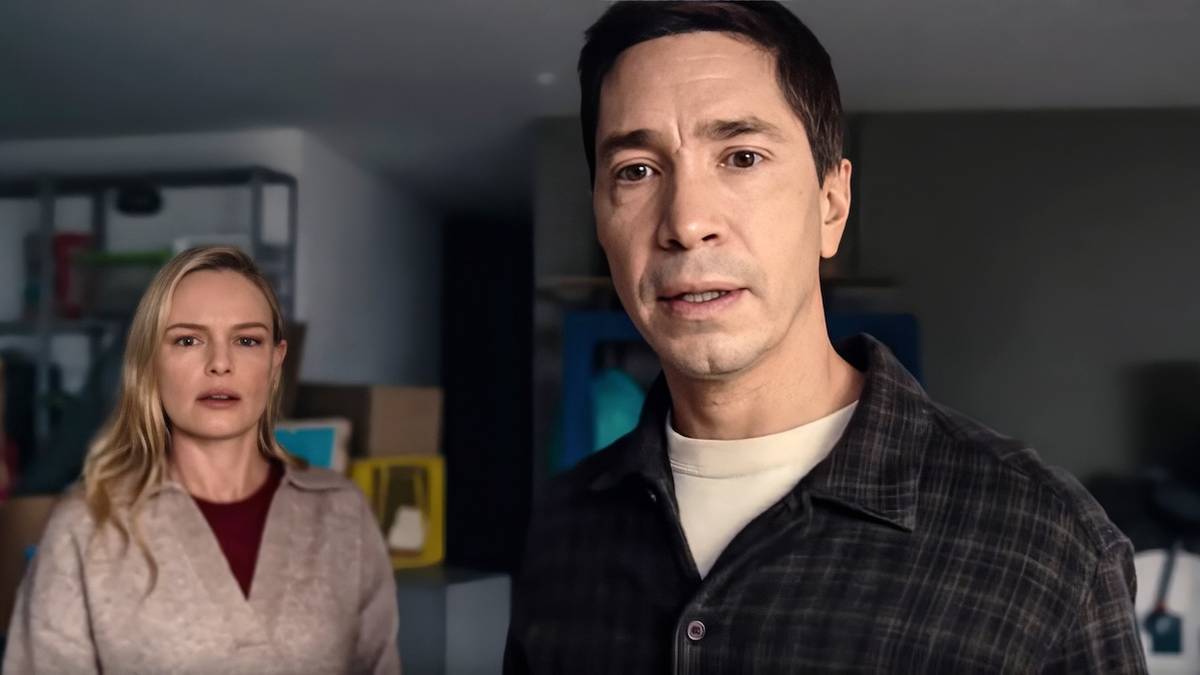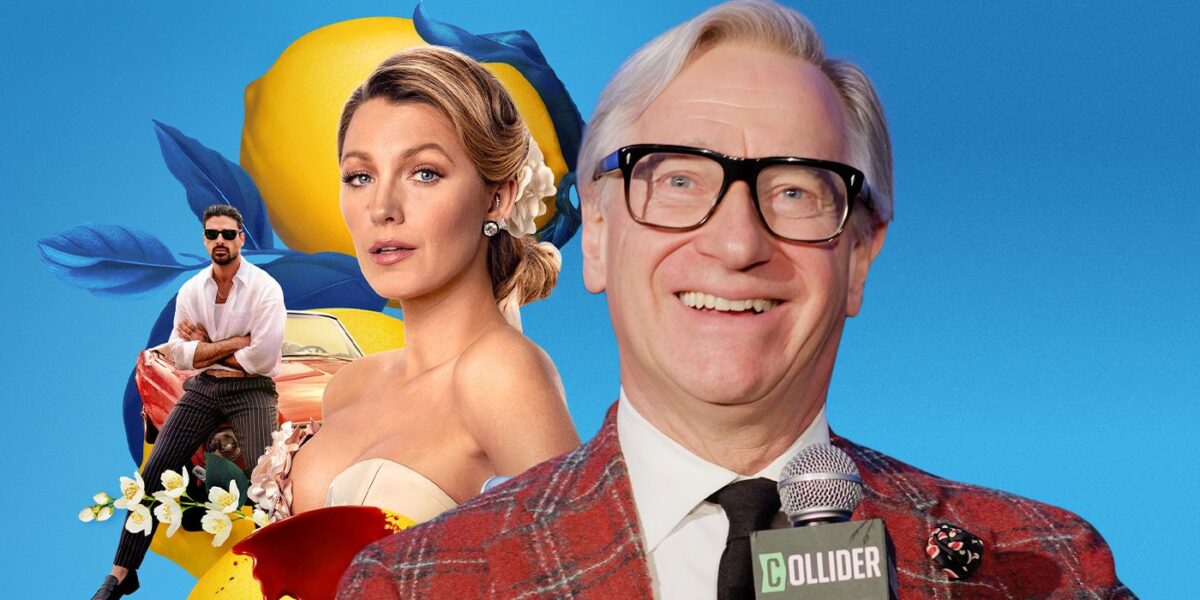
‘Another Simple Favor’s Paul Feig Reveals This Blake Lively Scene Nearly Got Them Banned From Italy
May 6, 2025
Summary
The sequel to ‘A Simple Favor,’ ‘Another Simple Favor, is set in Capri, Italy, featuring higher murder counts and bold fashion.
Paul Feig emphasizes collaboration with actors like Anna Kendrick and Blake Lively, balancing comedy and storytelling in his work during an interview with Collider’s Steven Weintraub.
Audiences don’t demand sequels unless they offer a fresh take. Feig enjoys creating entertainment that is high-stakes and extreme — which unfortunately doesn’t align with a ‘Bridesmaids’ or ‘Freaks and Geeks’ sequel.
Paul Feig’s A Simple Favor was a sharp, stylish blend of mystery, dark comedy, and suburban noir. Now, Feig returns with Another Simple Favor, a sequel set amid the dazzling city of Capri, Italy, where the murder count is even higher. Known for his signature wit and collaborative directing style across films like Bridesmaids, Spy, and Last Christmas, Feig embraces the challenge of building on the first film’s tight conclusion without undoing its continuity, while bringing Anna Kendrick’s Stephanie and Blake Lively’s Emily into a fresh, chaotic world.
In this conversation with Collider’s Steve Weintraub, Feig offers an inside look at the filmmaking process, from trusting test audiences and surviving brutally honest bathroom critiques to navigating the unique pressures directors face in Hollywood. He opens up about shaping Another Simple Favor’s expanded cast, battling industry bias in editing decisions, and his personal passion projects like the unmade Dark Army. Along the way, Feig shares hilarious stories from his time directing The Office, discusses how his career has evolved in the decades he’s been working in the industry, and reflects on the creative collaborations that made both A Simple Favor films so special.
“I Don’t Want That Much Honesty”: Paul Feig Talks Test Screenings
“That’s terrifying.”
COLLIDER: Before the movie started, you told me that you saw a longer cut of Planes, Trains and Automobiles.
PAUL FEIG: Well, my wife, Laurie, was running John Hughes’s company at the time. We met before we even knew each other because I went to a test screening of it at Warner Bros., and it was a three-hour version. I think she checked me in at the door. I just remember a really cute girl checked me in at the door. We’ve been married 38 years now, so there you go. We owe it all to John Hughes.
I’m very jealous you saw that longer cut. Test screenings are painful for a director sometimes, but as a movie fan, you often see versions that you’re never going to see again.
FEIG: I love test screenings because I’m very trusting of audiences in general, large groups of audiences. We’re graded on a curve, but if I get 300 people in a room who don’t know me, who are just movie fans, I’m generally going to get a pretty good sampling of what jokes work, what jokes don’t work, what story parts don’t work, all that kind of thing. So, I trust audiences for that. If there’s something that they don’t respond to that I love, I’ll go, “Let’s test it again.” Sometimes even three times. If they don’t respond, I’m like, “Okay, take it out.”
I’ve heard from many people that a way to really hear the unfiltered version of what your movie was is to sit in the bathroom stall after the movie because people will talk in there.
FEIG: Oh, no. That’s terrifying. I always sit through the test screening with my editor, and he’s sitting right in the middle of the audience. Then I always have to go to the bathroom because I get too keyed up. I run to the bathroom, and then you’re always at the urinal and you hear guys coming in like, “What’d you think?” And I’m like [clears throat], “I’m in here!” I don’t want that much honesty. It’s too much for my taste.
If Paul Feig Knew About a Sequel, Would the End of ‘A Simple Favor’ Change?
“I don’t want to negate anything.”
Image via Lionsgate
I have a bunch of questions, but this first question is about A Simple Favor. If you knew that you were going to make a sequel, would you edit out the very end of the movie, which had the information for each character?
FEIG: No. Actually, it’s kind of a fun challenge. It’s like being given a set of rules. It’s like being in an improv. You go, “Here’s your location and your profession,” and just kind of go with it. It was fun to kind of retrofit. We never thought we were going to make a sequel to this, so it was fun to work with the writers. I don’t want to negate anything. Some people go, “Oh, it doesn’t matter. You’re going to change it.” No, I want that continuity flow from that. So, it was really fun to figure out what breadcrumbs we had from the first movie that we could bring forward into this. We found a few things that we were really happy to pull forward.
What do you think would surprise people to learn about being a director in Hollywood?
FEIG: I don’t want to say it’s hard because that sounds like, “Oh, woe is me,” but it is. It’s perilous. Let’s just say that. If you have a few hits, people are like, “Oh, so you’re safe.” It’s like, no, the more hits you have, the less safe you are. As you get older, too, I think they’re always going, “Alright, when’s he going to get out of touch with the audience?” So, you’re always in a panic. I guess that’s the thing. I’m always in panic in my life.
Which of your films changed the most in the editing room?
FEIG: That’s a good question. Maybe Last Christmas a little bit, but just because it was structured differently when you first meet Emilia Clarke. Some of you may have seen the movie, but Emilia Clarke’s character is really in a bad place in her life. Emma Thompson wrote the movie, and when we meet her, she’s really a mess. She’s yelling and screaming and all this stuff. We thought it was brilliant. We just loved that we’re meeting her in a really bad place. Test audiences just hated it, and it’s really unfair. I think it’s a misogynistic thing, but it comes from women in the audience, too. People are much more forgiving of a guy who’s a mess than they are of a woman who’s a mess, and it’s really fucked up. We had a bunch of test audiences. We kept trying to test and see if they would warm up to it. So, we had to reshoot the opening to make her a little more sympathetic, and I think it sucks.
It’s bullshit.
FEIG: It’s bullshit! It really is. But the feedback just comes in, and you can’t even fight the studio because they’re like, “Everybody hates her,” so they won’t go along for the ride. So anyway, that’s kind of a drag.
If you could get the financing to make anything you want tomorrow, do you have a script that you’ve really been trying to get to made?
FEIG: I was developing this movie at Universal for a while called Dark Army, which was my tribute to the old Universal monster movies that I loved. I thought it was really a fun character that I had, and it brought forward characters from some classic old movies that I couldn’t get the rights to. I wrote it first with all these really famous monsters in it, and they’re like, “You can’t get the rights to this, somebody’s making this movie already, we promised this to so-and-so.” So, I kind of had to invent my own monsters with a couple that were original, but the studio just decided it was going to cost too much. I thought there was a way to do it less expensively, but sadly, that’s sitting in a drawer.
You have a pretty nice resume. Is there something on the resume that you really wish more people had seen?
FEIG: [Laughs] Not my first movie and not my second movie. You love all your babies, even the ugly ones. I wish more people had seen Ghostbusters so I wouldn’t keep getting shit about it.
Emperor Dwight Strikes Again!
Rainn Wilson’s Emperor Palpatine improv was so funny, they cut two storylines for it.
You directed seven episodes of The Office, I believe?
FEIG: No, I directed 19 episodes.
My bad. I wrote down the wrong number.
FEIG: That’s alright. I directed six episodes of Arrested Development.
I wanted to specifically get into The Office because the show is so incredible, and it really has gone through a resurgence through streaming. What is it like to edit one of those episodes when you have such gifted comedians delivering alts all the time?
FEIG: It’s all credit to Greg Daniels, who isn’t precious about all his storylines. We would get a lot of improv because they’re all brilliant at it, and to his credit, we would get in there and somebody would go off on a tangent about something, and I would build in the edit this extended version of that, but then the episode was going to be 40 minutes long or we knew something else had to go. Greg was like, “Cool, let’s jettison that storyline so we can keep Dwight dressed as the Emperor taunting Michael.” I remember in that Halloween episode, we were shooting it and Rainn [Wilson] was wearing the Emperor’s hood, and I was like, “Oh, it’s funny!” He started talking like him, like how the Emperor over-pronounces everything, and I had a shot from the side, and so we just got Dwight’s mouth just kind of out, and he just started tormenting Michael like he was the Emperor. We thought it was so funny that we just let it go for a few minutes, and we lost another storyline because of it.
On Peacock, I think they do the superfan episodes, which is the extended versions of all the episodes.
FEIG: Oh, so somebody has those edits. That was always the hard part. That’s the hard part about network television, but that one in particular. You always have the greatest version that was, like, 28 minutes long, and then you had to get to 22 minutes, so you had to start jettisoning stuff.
Why Make a Sequel to ‘A Simple Favor’?
“These characters really stuck with me.”
Jumping into why we’re talking tonight. The first film was made for $20 million and made $100 million worldwide. It’s not exactly what I would call “Oh my god, we need to make a sequel.” What went on behind the scenes, where all of a sudden, Amazon MGM was like, “Yeah, we’ll finance this?”
FEIG: It was during the pandemic. The movie was on streaming, I think it was on Amazon at the time, and it just went through the roof internationally. Everywhere, suddenly, we were number one when it went onto streaming. So, it was like, “Oh, gosh, maybe this is worth doing another one.” I’ve never done a sequel before. I don’t normally seek them out because I think if you get away with it once, you should just walk away. As James Brown said, “We hit it and quit it.” But this one always stuck with me. These characters really stuck with me, and there was interest floating around about it, so we got together with [writer] Jessica Sharzer and were like, “Well, I don’t know if we have ideas.”
Then I was really hung up for years about wanting to make a movie in Capri based on this wedding that Giovanna Battaglia, who was the fashion editor for French Vogue. She got married to this ultra-rich hedge fund guy, and they took over the island of Capri, and I was like, “I want to do something about that. I don’t know what it is. Is it a romantic comedy?” And then I was like, “Oh, we can make a destination wedding where all kinds of murder and mayhem take place.” So, actually, that wedding, if you go online and try to find pictures of that wedding, which I suggest you do because it’s spectacular, where they got married is exactly where we did that. My wife and I have been going to Capri for 30 years now, and we go up to that lighthouse, and I remembered it as being, “Oh, there must be grass out there.” We went out to scout it, and no, it’s all rocks and it just goes way down. I realized they built this whole structure out there, so we just hired the company that did that structure and basically recreated it. We just made it pinker. They had grass on theirs, and theirs is much wider. It was really fun to put that together.
That’s crazy. Originally, Lionsgate made the first one, and Amazon made the sequel. Was it Amazon saying, “We want to make a sequel?” How did that work behind the scenes? Were you working on an idea prior to Amazon?
FEIG: Yeah, we had the idea with Lionsgate, really. We had been talking to Lionsgate about it, who did the first one. We were like, “There might be something there,” so we came up with a pitch, and then we took it out to several places. Amazon was the one that bid the highest for it and wanted to do it the most. There was a little bit of a bidding war, if you will, over it, which was exciting, but it was sold to Amazon. It was always going to be for streaming. As much as you like to be in theaters, it was always going to be for streaming, which is kind of nice.
As a director, is it nice not to have to worry about the opening weekend box office?
FEIG: It’s a different feeling. There’s something very exciting about when you have a movie going into the theaters, but it’s also like, “Oh my gosh.” If it works, it’s great. If it’s terrible, it’s really the worst feeling in the world. So yeah, there is a little bit of stress off of it. Honestly, there were times when we made the first one when I was like, “Maybe we should have made this for streaming,” just because it’s harder to get an audience to go see a movie that doesn’t have tons of extra stuff in it, that isn’t a big spectacle.
Here’s the thing. You feel much better now because most people have giant-ass TVs or projectors and stuff, so you know they’re not going to be watching it, hopefully, on their phones. Please don’t watch it on your phone. I will say, people always go, “Do you make a movie differently for streaming or for TV?” No. You make it exactly the same way. The only thing you change is if there’s an insert that somebody has to read, you make it really big so that if they watch on their phone, they can still read it.
I didn’t even think about that.
FEIG: Yeah, exactly. You couldn’t make Lawrence of Arabia; you’d have to blow it up. [Laughs]
I’m just thinking about all the movies now in the last few years and the insert shots.
FEIG: Yeah, some you watch, like, “I can’t read it.”
Paul Feig Tackled a Unique Challenge for ‘Another Simple Favor’
“Sometimes it’s easy to hide things in the shadows…”
Image via Prime Video
This movie, without going into spoilers, has a lot more death than the first one. Talk a little bit about the choice to really kill off a lot of people.
FEIG: I knew we wanted a high body count just because we thought it’d be fun. Why not? There’s something to me that’s very fun to watch about terrible things happening in beautiful places. That’s why the first movie I always call a “suburban noir,” and then this one’s Italian noir. I don’t know what we call it, but very little happens in the dark, and I just find that very fun. I feel like as a filmmaker, sometimes it’s easy to hide things in the shadows, but if things are happening in broad daylight or bright lighting and you’re still like, “Oh my god,” there’s something really challenging about that. So, that was fun.
Then, I knew I wanted to have a cast of characters around them, because that’s one of the reasons why I avoid sequels. The reason we like a movie for the first time is that we’re discovering these characters for the first time. We’re going through the wringer with them, and we come out at the end, and they have solved the problem that they came into the movie with. So, with a sequel, are you going to go back to that character now that they’ve got another problem, and you’ve got to dig them out again, versus let’s take them to a whole new place? Sure, they got a problem they have to solve — Stephanie’s lost her confidence a little bit — but let’s surround them with new people. Honestly, for me, the big thing with this was I wanted to take Stephanie, who’s now conquered the suburban world because she went through this thing with Emily and came out on top and sent her to jail, and let’s take her into a whole other foreign world, literally a foreign world of rich people in a different land. Everything’s opulent and dangerous and over the top. That just felt like that gives us room to take these characters to a new place.
This is a really stupid question, but I’m gonna ask it anyway. You shot in a very, very, very sunny place. How do you keep everyone from getting completely sunburned all the time?
FEIG: [Laughs] We have a good makeup team with the high-end sunblock. Also, my DP, [John Schwartzman], is always hanging soaks over everybody because you never want your actors in direct sunlight.
I’m so serious. I’ve been on some of these bright sets in the sun, and I walk out just red.
FEIG: Oh, no, we’re both pasty guys — proudly so, I guess. I go from white to red to pink to white, so every vacation in the sun is a waste with me. I remember there’s a movie called Scavenger Hunt, way back in the ‘70s, and it was done cheap, and it was all shot in direct sunlight. It was the most uncomfortable movie to watch because you watched the cast getting sunburned as the movie was going on. I’m such a vampire, so no, we take good care of them.
Anna Kendrick and Blake Lively Were the Reason for the Sequel
“They’re both insanely inventive.”
Image via Amazon MGM Studios
What do you think would surprise people to learn about working with Anna [Kendrick] and Blake [Lively] as actors?
FEIG: They’re amazingly collaborative. They’re both insanely inventive, and they’re really fun to work with. I love them. If I had to pick one of the biggest reasons why I went back to do the sequel, it’s because I loved working with them. We had so much fun on the first one, and they’re both really creative. When I make a movie, I’m very collaborative with my actors. Every movie I’ve ever done, I bring them into the wardrobe process and say, “Okay, you’re playing the character. I have ideas of what I want the character to look like and dress like, but I want you to be part of this.” So, I let them get involved and create and have these ideas that then Renee Kalfus, my amazing costume designer, sometimes takes these crazy ideas and makes them happen.
Case in point, Blake was like, “I show up in the bookstore and I’m out of jail. I should be wearing a prison suit.” We were like, “What would that be?” And Renee and I got together, and suddenly she found this pattern of fabric that has these stripes on it. Then Blake was like, “I’m going to wear all these shackley jewelry.” It was so much fun. When she shows up on the set, finally, you’re like, “Wow.” That’s what a collaboration should be: everybody having great ideas. That’s why I think I don’t have a lot of patience for directors who are so controlling. Look, if you’re brilliant, you’re brilliant, but even if you’re brilliant, the actors are still playing the roles, and they are going to have something else that they’ll come up with. You don’t have to take the idea, but hear it and maybe try to morph it. Because I was an actor for years and years, and you are as affected by your wardrobe and your surroundings as you are by the script and what’s in your head. So, I want to make it as pleasant for them and as set up for success as possible.
I will say that Blake, in both films, dresses in these incredible outfits, and Anna is dealt a pretty bad deck.
FEIG: [Laughs] Well, Anna’s funny because she’s like, “I’m not going to compete with that.” We had plans at one point, like, “She’s going to dress in all these beautiful things, too, and try to keep up.” And she was like, “No, I don’t want to do that.” So, it’s great. Her doing that made it so much more fun because Stephanie is us, and she’s going into this world of opulence, so sure, she’s going to bring her jean shorts and she’s going to bring her t-shirts, and brought a couple of nice dresses. She’s a midwestern mom, and so it feels very real versus Emily’s from another planet, and you just don’t know where these costumes come from. The giant hat, which I know everybody enjoyed very much, Blake found, because in Capri, there’s this store called Fiore that I always buy hats at, and they have this giant-ass hat in there. She came to the set one day, and she goes, “I found the greatest hat.” She showed me, and she goes, “Should I wear it?” And I was like, “You better wear that. It’s fantastic.” And, boy, she works that hat like a pro.
Image via Amazon MGM Studios
I noticed that you are in the movie as a lawyer. How do you pick which role you want to take in a movie like this?
FEIG: I’ve kind of stopped doing it. What happens now is if we come up with an idea or an actor doesn’t show up, I’m always in a suit and tie when I’m on the show.
Did that happen in this, that an actor didn’t show up?
FEIG: Yeah. So I was just like, “I’ll do it. I’m wearing a suit, and I’ll just do it.” Then, if you watch Jackpot!, my last movie, we came up with this gag for the end thing where somebody serves a copyright infringement thing to John Cena, and we wrote it on the set, so I was like, “Well, I’m in a suit. I guess I’m the lawyer.” I needed a haircut, so I looked like a scraggly lawyer. I used to try to figure out where to put myself in movies, but when you’re a director, the most powerless thing you can do is step in front of the camera and act because all you’re doing all day is telling people, “Oh, try this, try that,” or, “Oh, you could do this better.” Then you get in front of the camera, and all they’re thinking is, “Well, this fucking guy’s telling me what to do. He’s terrible.” [Laughs]
How does it work, though, after you do a take like that? Are you running to Video Village to watch yourself, or do you have someone that you trust watching your performance?
FEIG: My producing partner Laura Fischer. I always run over like, “Was that okay?” She’s like, “Don’t smile as much,” or, “Do this.” I can’t watch myself.
As you know, I’m obsessed with talking about editing because it’s where it all comes together. How was this edit compared to the first film’s edit?
FEIG: Honestly, both these films came together probably faster than most of my movies do in the editing room, I think because they’re more tightly scripted. In my comedies, we do a lot of improv and a lot of alternate jokes that we’re always coming up with so there’s so much to sort through and so much to figure out about how we’re going to structure it. The structure is set by the script. We don’t go in and just go nuts, but you want alternate jokes for everything. But these, since they’re thrillers, that’s what I like about thrillers; they have to stick pretty close to the blueprint that you have. So, it was fun to put together, and then there are a number of gags and stuff in there. So, it was more trading those out, like, “What jokes are underperforming? Let’s switch those out with the test audience.” But these are a little more fun to do, I have to say.
Related
‘Another Simple Favor’ Review: Blake Lively and Anna Kendrick Dive Headfirst Into Soap Opera Territory with Paul Feig’s Entertaining Sequel
Anna Kendrick and Blake Lively return as frenemy moms Stephanie and Emily in ‘Another Simple Favor.’
Did you end up with a lot of deleted scenes in them? Talk a little bit about what you cut out and why?
FEIG: No. Honestly, these are pretty tight. There’s very little that I can remember that we cut out of these. It’s more just moments in the flow. It’s really about pacing. I’ve got other movies that we’ve had so many deleted scenes from, just because you stack them up. But, no, we’re pretty economical with this. All we’re doing, really, is fighting for the pacing to make sure the audience hopefully doesn’t get bored, and the believability of the characters and the arcs of the characters. If the audience ever goes, “Oh, come on,” or “That’s dumb,” or “Why would they do that?” you’ve kind of lost the audience. So, it’s a lot of making sure you’re policing the performances. I work with such good actors, they’re never going to be false, but sometimes I’ll push them to go really big, or sometimes I’ll pull them way back.
When I direct, I don’t rehearse. So, we get there, set the shot, and then I just go for it. The actors start doing what they naturally thought they wanted to do with it, and I, in my head, go, “Okay, I want it to be over here by the end of this.” So I go up and give little micro notes, and we’ll do another take. So what happens is, by the time you get to the tenth take, I’ve gotten this whole range of performances that then I can go in and piece together because you don’t know until you get in the editing room what the flow is going to be.
It’s so funny. Every time I finish a movie, the studios are always really happy with the dailies, and I always say, behind the scenes, “Okay, I just hope it all adds up because.” I’ve had movies where all the dailies are fantastic, and you put the first cut together, and you’re like, “We just made the worst movie of all time.” Then it’s just about molding. That’s what’s so fun is seeing when the editor’s cut is put together. It’s such a shock. A director I did a panel with once said, “Watching your movie for the first time is like a Gatling gun of pain,” and it’s true, because every bad decision you made is just flying at you and you can’t stop it. It’s happening in real time. But then you just go in, one scene at a time, making it work and shaping it. That’s all you do.
I’ve spoken to some directors who say after they watch their assembly cut, they’re ready to just jump out the window and admit that they are the worst director that’s ever, ever helmed a movie.
FEIG: When you wrap a movie, sometimes you just go on a vacation for two weeks to de-stress and all that stuff, and the editor’s working on their editor’s assembly, and you’re going, “I’m so relaxed right now, and I know I’m going to get just punched in the balls as soon as I get to the editing room for the first time.” But sometimes, with the assembly, you’re like, “That was not horrendous,” and other times you’re just like, “Oh my god, what have we done?”
How Paul Feig Changed ‘Another Simple Favor’s Original Story
“I wanted to up the glamour and up the intrigue… And we brought the body count up.”
Image via Amazon MGM Studios
I want to go backwards a little bit. How did the sequel story possibly change along the way? Did you guys come up with, “This is what we’re going to do?”
FEIG: We had a script that got greenlit, actually, that was really good. It was really, really fun. But then, when the writers’ strike happened, we just had time to sit. I was reading a lot of feedback from people who were excited that we were making a sequel, and people were like, “I hope there’s this and that.” You could just tell what they’re expecting from it. I just realized, as good as that script was, I don’t think it was going to be exactly what fans of the first movie wanted. So, we went in and basically, with the writers, reconceived acts two and three to keep in Capri because it turned into this chase through Italy. It didn’t give Emily enough chances to be in a different wardrobe. It was more they were in disguise or hiding like nuns. I don’t think anybody wants to see Emily dressed like a nun unless it’s the Corpse Bride outfit that she wears. So, I wanted to up the glamour and up the intrigue with more twists and turns. And we brought the body count up.
I was going to say, I think you added kills.
FEIG: Oh, yeah. There are several kills that got added.
So you see the shooting schedule. What day do you have circled because you can’t wait to film it, and what day was like, “How the F are we going to film this?”
FEIG: All the wedding party stuff. There are so many people, and there are so many little bits and pieces that I get more freaked out by the organization of stuff. There are so many moving pieces, and you never have enough time. Your schedule’s always seven days too short. My DP is always like, “We’re never going to make it,” but we always do somehow. We just get through it. What I couldn’t wait to shoot was the wedding scene, actually, which was one of the first scenes we shot. The logistics were scary, but there’s something nice about basically a montage because you’re grabbing pieces and bits versus really making sure I’ve got every single piece to make sure that we get this scene and every dynamic of the dialogue in this scene and the moving of the story forward. So, a montage is kind of fun.
Roger Deakins has said to me that he will shoot one camera, there’s no coverage, and then you have Ridley Scott, who will sometimes shoot with eight cameras. How do you typically like to work and when do you change your own rules?
FEIG: I’ll take as many cameras as I can get. I’m a huge fan of Roger Deakins, but when my DP told me that was how he works, I was like, “I can never work with Roger Deakins.” I can’t do one camera. I’m so much about lightning in a bottle, the fact that I don’t rehearse, I like to cross-shoot as much as I can.
Do you always work with, like, three cameras in every shot?
FEIG: No, it’s usually two. It’s very rare. You get a third camera, generally, on the budgets I work on if there’s a big sequence, like a big party, and there’s dancing around. You’ll get a third camera for that, but then you get a whole camera crew with it, and it just gets expensive. Also, too many cameras starts to feel like I’m doing a sitcom. I just like to be able to get multiple takes at the same time, so that when something happens for the first time, I’ve got a lot of options to show it. Again, that’s why I don’t like to rehearse; it just feels like the first time something happens is the most exciting time.
No, We’re Probably Not Getting a ‘Bridesmaids’ Sequel
“Call me crazy…”
Image via Universal Pictures
Listen, I’m obviously not a director, but if I was shooting, I would always have two cameras, especially with dialogue stuff with comedy. You want to make sure you’re getting it.
FEIG: That’s cross shooting. If you don’t know what it means, it’s when, if you were shooting us, I’d have a camera here shooting him, and we’d have a camera there shooting me. Go back to Bridesmaids with Kristen [Wiig] and Maya [Rudolph] talking in the coffee shop in the opening. That was just five hours of cross shooting and them just, like, “Imitate a penis,” and doing all these things and then making each other laugh. It just has such a fresh thing that, when you’re establishing a relationship between two characters, that energy comes across, versus having to just say a bunch of exposition to say how long they’ve known each other and what good friends they are.
Now that you’ve made a sequel, does that mean you’re finally going to do a Bridesmaids sequel?
FEIG: [Laughs] No. That’d be up to Kristen. I don’t know. Call me crazy, I think some movies are just better off being one-offs. It doesn’t mean it couldn’t be great.
By the way, I agree with you. I think more movies should just be one-offs unless you have a great idea.
FEIG: Yeah, totally.
But you know the way Hollywood is.
FEIG: If you think about 20 years ago, everything got a sequel. It would just automatically get a sequel. Then, in the last number of years, we’ve noticed a lot of sequels don’t do that well, and it’s because audiences change. We did a whole study on this at my company. The question you have to answer for an audience now is why? Why do I have to see this again? Sure, I like the first one. Why do I want to see another version of it or a continuation of it? So, like you say, you have to have a really good answer for that. You have to have a really awesome idea. You can’t just go, “They’re back! They’re on a new adventure,” unless it’s awesome and it’s bringing new stuff. So, I don’t know. I’m definitely not drawn to doing a lot of sequels. That said, I’ll probably do a sequel to everything else I’ve ever done.
So you have Elizabeth Perkins instead of Jean Smart. Yeah. Was there a thought to having someone look at Elizabeth Perkins and say, “You look a little different?”
FEIG: I wrote that line. I was very proud of that. [Laughs] Jean was busy. I’ve worked with Elizabeth a bunch of times. I started working with her on Weeds, and then she was in Ghostbusters in the long version. We’ve just been fast friends, and I knew Jean couldn’t do it. Everybody else in the movie is from the first movie — even the kids are the same kids. Fortunately, they grew up to be good actors. So I was just like, “How do we excuse this?” So, I just wrote that, like, “Hello, mother. You look different.” “I had work done.” It’s like, “Okay, that explains it. Now we’re off.”
Image via Amazon MGM Studios
Jake Tapper is great in this. Is it tough to get a CNN anchor, or do they all just want to bein movies like this?
FEIG: The funny thing is, I’ve always been a fan of Tapper’s and I always watch his show, and he had reached out years ago because he’s a big fan of Freaks and Geeks. So, we had this internet friendship, and yeah, when this came up, it was like, “Hey, Jake, you want to do this?” And he was kind enough to do it.
He adds a lot.
FEIG: Legitimacy.
100%.
FEIG: Exactly.
Paul Feig Likes a Little Danger With His Comedy
“It’s fun to make people laugh with more extreme stuff and high stakes.”
Image via The New York Times
Talk a little bit about finding the tone that you’re looking for in the edit. You’ve talked about it a little bit, but this has to manage a few different things. It’s both fun, and then it can be serious.
FEIG: Well, it’s my favorite thing to do is to walk a tonal tightrope. Doing straight-up comedy has gotten much harder in the last number of years because audiences, for a while… And it might be changing; The Naked Gun trailer looks hilarious, and that is flat-out comedy…
I seriously cannot wait.
FEIG: I cannot wait either. That’s bringing back comedy, straight-up comedy. But people have gotten weird about it. Even when we were doing Bridesmaids, there were a lot of people who would watch the trailer, and there’s a lot of hostility towards comedy trailers, like, “Clearly all the best jokes are in the trailer.” I think people got burned by comedies for a long time. I just like high-stakes comedy that’s in a genre because I love genres. I really love thrillers, and I just love genre movies, just flat out. I think the best comedy is happening in genres. All best comedy these days is in horror movies. I mean, M3GAN is a comedy. M3GAN is a hilarious comedy. Abigail is one of the funniest movies I’ve ever seen. I love that stuff because it’s extreme.
So you’re first in line for M3GAN 2?
FEIG: Yeah, 100%. I love that movie. I thought it was so funny. A lot of horror is very nihilistic. It always kind of ends and everybody’s fucked. I like that they kind of won in the end. I like horror that’s kind of, “You win!”
There’s another one coming out that Blumhouse is doing. It’s like an adult version of M3GAN.
FEIG: Yeah, it’s in that universe.
SOULM8TE. That’s another thing I think you’re going to get a kick out of.
FEIG: There you go. It’s fun to make people laugh with more extreme stuff and high stakes. I don’t like movies where it’s about the cops, but it’s a comedy, so the villain’s bumbling. If somebody doesn’t get killed, I don’t go, “Oh my god, they can get killed!” That’s why I used to love those movies, 48 Hrs., Beverly Hills Cop. I remember going to see Beverly Hills Cop, like, “Oh my god, it’s Eddie Murphy. There’s gonna be so much fun,” and halfway through, they execute a guy in the head. I’m just like, “Oh, shit.” But then you’ll realize, “Oh my god, all the stakes are so high. Now I’m really worried about Eddie Murphy in 48 Hrs. when he goes into the redneck bar.” I think those kinds of stakes are what you need.
I could not agree with you more.
Is There Going to be Another ‘Simple Favor’ Sequel?
“We’ve shown that we can take these characters in a different direction or keep them going.”
Image via Amazon MGM Studios
I don’t want to do any spoilers, but the end of the film teases what could be more. Are you even contemplating, if this does well, that you could be making a third?
FEIG: Again, it’s almost like in for a penny, in for a pound. We did a sequel, and it’s kind of like now we’ve shown that we can take these characters in a different direction or keep them going. That whole thing came up from… We shot a week and a half in Capri and then the Italian government said, “The G7’s coming in, so everybody has to leave.” So, we kind of got thrown out of Capri and shot the rest in Rome. We were building our interiors in Cinecittà, if there are any [Federico] Fellini fans. I finally got to live my dream in Cinecittà.
I was going to say, if you’re not familiar with that studio, it is ultra famous in Rome. The history in that studio is ridiculous.
FEIG: Yeah, all Fellini’s movies were made there. But I was living in Rome, and I would take my morning walk all the time, and I’d walk past the Trevi Fountain, and we were in prep, and I was like, “Why am I not putting Blake Lively in the Trevi Fountain?” So, I just got hung up on this idea, and so we wrote that last scene, and I was so hell bent on she’s going to be walking through that fountain like Anita Ekberg in La Dolce Vita. So, I tell them, and our Italian locations people are like, “No! You cannot possibly do that. It cannot happen.” I’m like, “Why not? You can get anything done in the movie business, right?” So then other Italians were saying a word that basically means “he who follows the rules,” and it’s an insult, meaning basically, “Yeah, you want to do it, just do it and screw them.” So I was like, “We’re going to do it!” You can’t believe how this almost international incident was starting almost happen. We were getting warnings from the police, like, “If you do this, you’re going to be thrown out of Italy. You will be banned from Italy forever!” Then the other people are going, “Just go do it.” And so it was the last thing we shot was that night. We get to set, there are cops everywhere, and so that’s why she’s sitting on the edge of the fountain and not in it. But it’s fine. I actually think it was better. It would have been real clunky for her to walk through the water.
I was actually wondering how you got that shot because there’s nobody in the frame outside the fountain. How did you do that?
FEIG: You’ve got to shoot from 2 a.m. to 6 a.m.. Anywhere the camera is, there are a lot of people behind it. And shoutout to there’s this young couple who are just haunting around the entire time. We were like, “Oh, they must be really big fans of us, blah blah blah.” So we finally wrap, they go right to the edge of the fountain, and he proposes to her. They waited all that time so he could propose in front of the Trevi Fountain. Blake went over to them and congratulated them. It was a very sweet.
If you get to make another sequel, will it be called Even More Simple Favors or Another Simple Favor: Electric Boogaloo?
FEIG: [Laughs] Oh, if only that. I think it’ll be Oh, No, Not Another Simple Favor.
Paul Feig’s Next Movie Is a Best-Selling Thriller Starring Sydney Sweeney
The Housemaid “goes spinning off the rails.”
Image via Youtube
You have filmed another movie, which comes out at the end of this year. Please tell people the cast because it’s fucking crazy, and also what it’s about and the title.
FEIG: It’s called The Housemaid. It’s a book that’s been on the bestseller list for a year and a half. It’s a thriller, a straight-up thriller, this one. It’s Sydney Sweeney, Amanda Seyfried, Brendan Sklenar, and Michelle Marrone from this movie. It’s pretty awesome. I gotta say, I’m really excited about it. We shot it in New Jersey in the first two months of the year, and I’m just in the middle of editing and very happy with it.
You should tell people what it’s about.
FEIG: It’s about a young woman who shows up at these rich people’s house to get a job as a housemaid.
That is Sydney.
FEIG: It is Sydney. Exactly. Amanda is the wife. She gets hired and it seems really normal, and everything goes spinning off the rails. It’s fantastic. It’s a really good book. It’s a really fun book to adapt.
And that comes out at Christmas.
FEIG: Yes. It comes out Christmas Day. Christmas day.
I saw footage at CinemaCon, and it looked fantastic. The crowd definitely was into it. I know it’s a little early because you’re in post-production on your film, but I just read you made a new deal at Warner Bros. You signed a first-look deal?
FEIG: Yeah, we signed a first-look movie deal at Lionsgate, and we just signed a first-look TV deal at Warner Bros.
What do you have coming up that you can tease fans?
FEIG: Nothing. [Laughs] The Housemaid! We’re in heavy development on, like, three different projects that could go next. They’re all really various shades of crazy and fun. My only goal in life is to just entertain people. I’m not trying to win awards with anything. I just love making movies that hopefully make people have fun. You can go through the fire with them and they can get dark, but I always want my movies to be good-natured at the end of the day. So, the message at the end is, like, sure, you can win. I don’t like to have a nihilistic, down ending. I just want people to have fun. I want my movies to be kind of a party that gets fun and then gets dark, and then people get in a fight and maybe somebody dies, but it’s okay because they catch the killer and everybody’s happy again.
Will Paul Feig Ever Continue ‘Freaks and Geeks’?
“There is no real ending to something.”
Image via NBC
One of the best seasons of TV in history is Freaks and Geeks, and I’m just curious, when the box set came out and everyone was clamoring about it, was there ever any discussion of doing like a two-hour movie or some sort of thing for closure, or were you guys like, “This TV season is perfect. I don’t want to mess with it?”
FEIG: For 25 years, people have tried to get us to do a reunion movie or bring it back, and I’m just like, “We got away with that one.” We worked our asses off on that. People always go, “Don’t you wish you had closure on it?” To me, it’s perfect. I’m so happy with that last episode that I wrote and directed, which was nice to get to do. It just puts everybody in a different place, which that was my high school experience. You’d go away to summer vacation and come back, and your friend, who was a nerd, is a burnout. Now somebody is a jock who used to be something else. I would say, the only TV show that ever had a complete ending was Six Feet Under, because the last episode, they showed you how everybody died, and you go, “That’s the only time that life stops is when you die,” because the characters just keep evolving and stories keep evolving. So, there is no real ending to something.
Another Simple Favor is available to stream on Prime Video now.
Another Simple Favor
Release Date
May 1, 2025
Director
Paul Feig
Writers
Paul Feig, Laeta Kalogridis, Jessica Sharzer
Publisher: Source link
Erotic Horror Is Long On Innuendo, Short On Climax As It Fails To Deliver On A Promising Premise
Picture this: you splurge on a stunning estate on AirBnB for a romantic weekend with your long-time partner, only for another couple to show up having done the same, on a different app. With the hosts not responding to messages…
Oct 8, 2025
Desire, Duty, and Deception Collide
Carmen Emmi’s Plainclothes is an evocative, bruising romantic thriller that takes place in the shadowy underbelly of 1990s New York, where personal identity collides with institutional control. More than just a story about police work, the film is a taut…
Oct 8, 2025
Real-Life Couple Justin Long and Kate Bosworth Have Tons of Fun in a Creature Feature That Plays It Too Safe
In 2022, Justin Long and Kate Bosworth teamed up for the horror comedy House of Darkness. A year later, the actors got married and are now parents, so it's fun to see them working together again for another outing in…
Oct 6, 2025
Raoul Peck’s Everything Bagel Documentary Puts Too Much In the Author’s Mouth [TIFF]
Everyone has their own George Orwell and tends to think everyone else gets him wrong. As such, making a sprawling quasi-biographical documentary like “Orwell: 2+2=5” is a brave effort bound to exasperate people across the political spectrum. Even so, Raoul…
Oct 6, 2025
